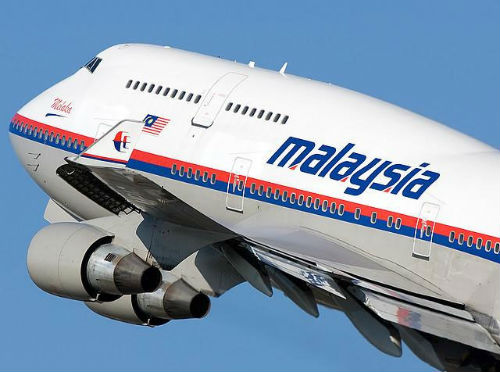It was reported that Australia has found some possible debris in the Indian Ocean from the ill-fated Malaysia Airlines MH370 plane. However, we still don’t know what actually happened to the aircraft.
Read on, for a possible theory that would tie in with the new findings, if the Australian sightings are indeed found to be the MH370 debris.

What happened to Malaysia Airlines MH370? (Image from pakistantribe.com)It was reported that Australia has found some possible debris in the Indian Ocean from the ill-fated Malaysia Airlines MH370 plane.
There was a fire on board the ill-fated MH370 flight. What happened to the aircraft had absolutely nothing to do with the more complex matters of terrorism, pilot suicide or hijacking threats.
This is the very simple, but startling new theory, recently shared by Chris Goodfellow on his Google Plus account. Goodfellow is a pilot from the USA, with more than 20 years of flying experience.
Electrical Fire on Board
According to Goodfellow, there was an electrical fire on board the MH370 aircraft, which would logically explain the sudden loss of communication and the change in the plane’s direction.
In his article, he wrote, “In the case of an electrical fire, the first response is to pull all the main busses (cockpit controls) and restore circuits one by one until you have isolated the bad one.” Because of this, he says that the plane’s communication would have completely and suddenly ceased.
Fire in-capitated the aircraft’s passengers and crew
Goodfellow added that the fire may also have overheated the “front landing gear tyres” and this caused the passengers and crew to be in-capitated and completely overcome by the flames and smog.
While oxygen masks are usually deployed, he says, based on his own experiences, that these are not usually deployed when there is a fire – they wouldn’t be effective for long.
This also explains the change in the plane’s direction, because, when the pilots realized that there was something wrong with the plane, he had tried to turn it around and set it on autopilot to land at the nearest airport.
Pilot had tried to land at Langkawi airport
So Goodfellow did a Google Maps search of whether there was indeed an airport in line with the plane’s new direction – and within 30 seconds, he had discovered the Langkawi airport.
He says, “Actually he (the MH370 pilot) was taking a direct route to Palau Langkawi, (which has) a 13,000 foot strip (runway) with an approach over water at night with no obstacles…He knew the terrain was friendlier towards Langkawi (compared to the Kuala Lumpur airport, which has 8,000 ridges to cross) and (it was) also a shorter distance.”
However, despite his attempts, the pilot had never managed to get the plane to Langkawi airport because he “didn’t have the time.
According to Goodfellow, the smog had completely intoxicated the pilot before he had reached his destination. As a result, Goodfellow says that the MH370 aircraft, with the pilots, passengers and crew overcome by the smoke and fire, continued to fly on autopilot mode until the fuel ran out – and the plane subsequently crashed in the Indian Ocean.
So then, Goodfellow feels that this is where the search parties should be looking for the missing aircraft along the Pulau Langkawi route, and not anywhere else.
Click here to read Goodfellow’s original Google Plus post.
Other Blog Posts
Click here for another possible theory about MH370’s disappearance by an American student.
Click here for more possible theories about MH370 plane.
Click here for a fiction story about MH370 going in another dimension.

Leave a Comment